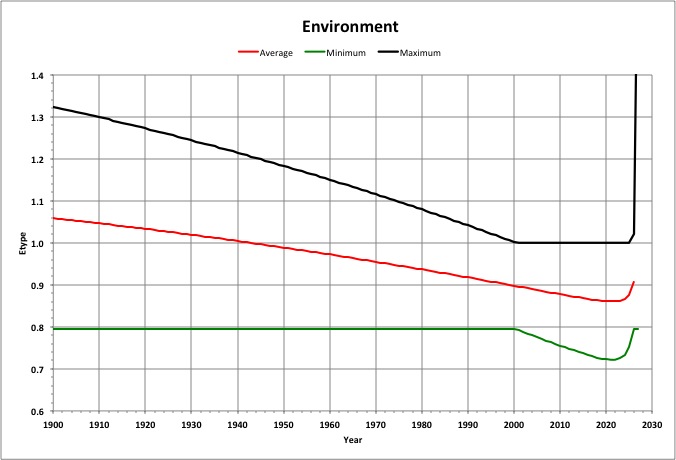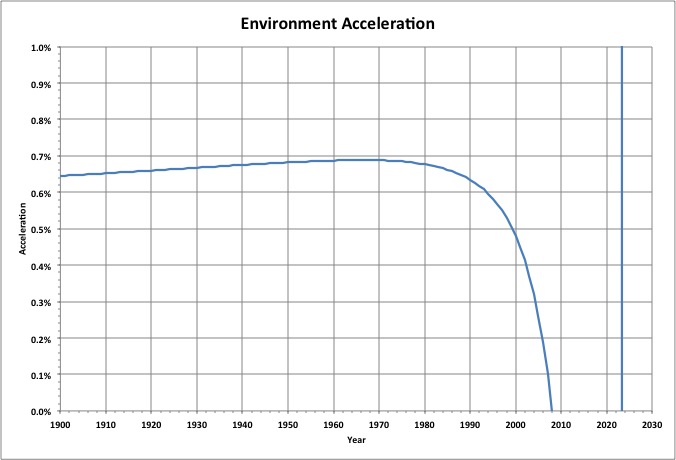
This graph of the results shows that the main effect of humans on the environment has been to reduce its variability by lowering its maximum value.

Close up, we see that the average environment came under human control (fell below 1.0) in 1943, and will bottom out in 2022, just after the projected population peak.
The environment's maximum value stopped decreasing in 2001, when some people couldn't get any happier. Afterwards, the environment's minimum value decreased, widening the range of environments and increasing the happiness of more people.

This graph shows how fast the slope of the average environment changes (its acceleration).
The acceleration reached a maximum in 1965, and dropped below zero (started decelerating) in 2007.